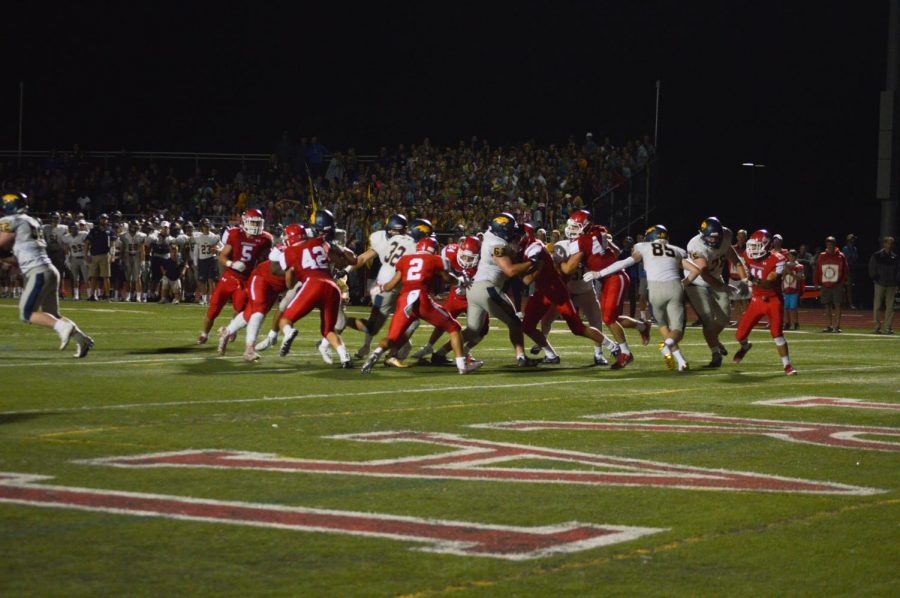Four schools to leave DuPage Valley Conference
May 18, 2018
At the end of this school year, Glenbard North, Wheaton North, Wheaton-Warrenville South and Lake Park High Schools will be leaving the DuPage Valley Conference (DVC). After this change, five schools will remain in the DVC: Naperville Central, Naperville North, Neuqua Valley, Metea Valley and Waubonsie Valley High Schools.
“[The four schools] said they were looking for different opportunities that would work better for their schools,” Athletic Director Andrew Lutzenkirchen said. “It’s based on schools trying to find a way to win five football games to be playoff eligible. Football is pretty tough in this conference.”
Principal Bill Wiesbrook expressed disappointment over the schools’ reason for leaving the DVC.
“Sometimes, in a close competition, you might emerge with a loss,” Wiesbrook said. “That doesn’t mean you are bad. It doesn’t mean the [experience] was bad. If I take on a golf competition against someone who is verys similar or maybe a little more advanced and if they beat me, I don’t [quit].”
Other area high schools are realigning as well. St. Charles East, St. Charles North, Batavia and Geneva High Schools will be leaving the Upstate Eight Conference to join the four schools leaving the DVC, forming the new DuKane Conference starting this fall.
The changes have been a few years in the planning. DVC by-laws state that any teams that want to leave the conference must notify all participating schools two years prior to leaving unless the committee of remaining schools decides otherwise.
With only five schools remaining in the DVC, Lutzenkirchen will face challenges when planning football matches for the 2018-2019 school year. The Illinois High School Association (IHSA) states that every football team must play nine matches and must win five of the nine matches to qualify for playoffs.
Before the four schools left, the DVC was a conference of nine schools, meaning that each team would play eight matches and would find one other opponent outside of the DVC to play against to meet the minimum requirement.
Wiesbrook and Lutzenkirchen both expect that schools will be added to the DVC in the near future.
“I will not be surprised if in a few years we hear from schools [wanting to] join the DVC,” Wiesbrook said. “If it feels like a good fit, the five principals vote on that decision.”
“If [the school] is too far away, [athletes] have to leave halfway through eighth period, missing out on their education,” Wiesbrook said. “Some parents want to go watch [their kids compete]. They’d rather not drive far distances either.”
The IHSA Football Advisory Committee held a meeting on April 19 to discuss potential solutions to this challenge.
The following information was gathered from the meeting minutes:
Committee members discussed a possible option of assigning schools to districts consisting of eight or nine schools and using district standings to determine playoff brackets.
If this change is implemented, nine-team districts would have the flexibility to schedule one non-district football game and eight-team districts would have to schedule two non-district games. These games would not be considered for the teams’ overall standings in their districts for playoff qualification.
Then, in the playoff bracket, teams would be placed in 32-team brackets based on the team standings in their districts. For example, one match could be #1 from District A v. #4 from District D.
The Football Advisory Committee will develop a formal proposal that explains the district format and will share it with other schools to consider during the IHSA by-law amendment process in November.








